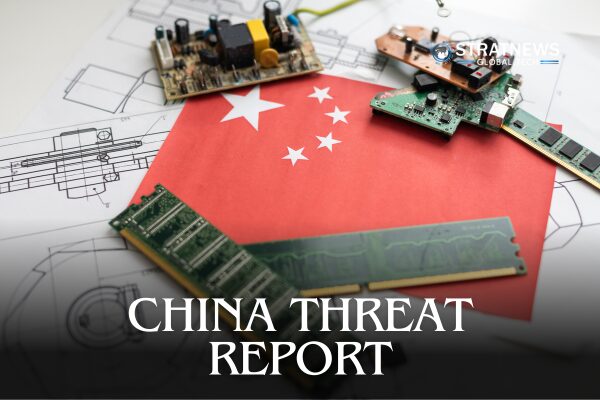China Identified as Top Military and Cyber Threat to the US
China remains the most significant military and cyber threat to the United States, according to a report released on Tuesday by US intelligence agencies. The Annual Threat Assessment highlighted China’s advancements in military capabilities and cyber warfare, noting that Beijing is making “steady but uneven” progress on potential strategies to capture Taiwan.
China’s Expanding Military and Cyber Capabilities
The intelligence report warned that China has the capability to strike the US with conventional weapons, launch cyber attacks on critical infrastructure, and target American assets in space. Additionally, it stated that China is aiming to surpass the US as the global leader in artificial intelligence (AI) by 2030.
Director of National Intelligence Tulsi Gabbard told the Senate Intelligence Committee that China’s People’s Liberation Army (PLA) is developing advanced technologies, including hypersonic weapons, stealth aircraft, and an expanded nuclear arsenal. She described Beijing as Washington’s “most capable strategic competitor.” The report also noted that China is likely planning to use AI-driven large language models to spread disinformation, imitate identities, and enhance cyber attacks.
CIA Director John Ratcliffe added that China had only made limited efforts to restrict the export of chemicals used in the production of fentanyl, which has fueled the US opioid crisis. He stated that China’s reluctance to act was due to the financial benefits for Chinese businesses involved in these exports.
Rising Global Tensions and US-China Frictions
The report identified not just China but also Russia, Iran, and North Korea as key challengers to US influence. It highlighted that Moscow’s involvement in Ukraine has provided valuable insights into countering Western military strategies.
US President Donald Trump recently imposed a 20% tariff increase on all Chinese imports, citing Beijing’s failure to curb the flow of fentanyl precursors. In response, China denied responsibility, with embassy spokesperson Liu Pengyu accusing the US of exaggerating the China threat to justify its military dominance. He also argued that America must take responsibility for its own drug crisis.
Senate Hearing Overshadowed by Intelligence Leak
The intelligence report was presented during a Senate Intelligence Committee hearing, but discussions were overshadowed by concerns about a sensitive military information leak. Democratic senators questioned Ratcliffe and Gabbard about their participation in a Signal messaging group where highly classified military plans were reportedly discussed. A US journalist was mistakenly included in the chat.
Meanwhile, Republican senators focused on immigration, citing concerns about large-scale illegal crossings. The intelligence report supported their claims, stating that illegal immigration had strained US resources and enabled known or suspected terrorists to enter the country.
China’s Strategic Goals and Economic Challenges
A significant portion of the report examined China’s long-term objectives, including increased pressure on Taiwan. The intelligence agencies assessed that China is preparing military options to seize the self-governed island while deterring potential US intervention.
China also seeks to expand its influence in the Arctic, particularly in Greenland, which it views as a key strategic foothold. In response, US Vice President JD Vance is set to visit Greenland this week as part of a high-profile delegation. Trump has renewed calls for the US to acquire Greenland, a proposal that has strained relations with NATO ally Denmark.
Despite its global ambitions, the report noted that China faces domestic economic difficulties, including corruption, demographic imbalances, and slowing growth. Declining consumer and investor confidence is expected to further hinder its economic progress, and officials in Beijing appear to be preparing for continued economic friction with Washington.
With inputs from Reuters


